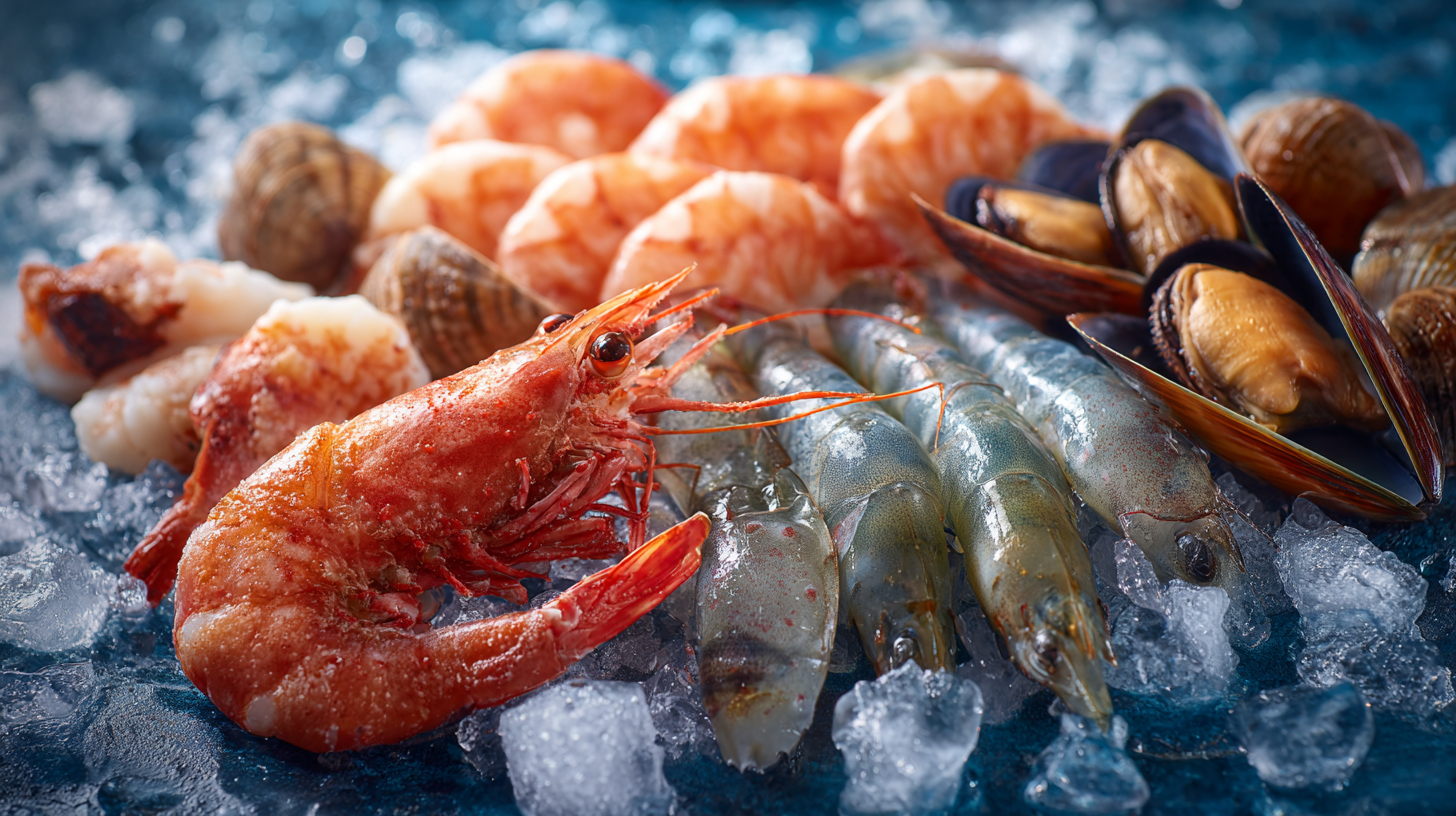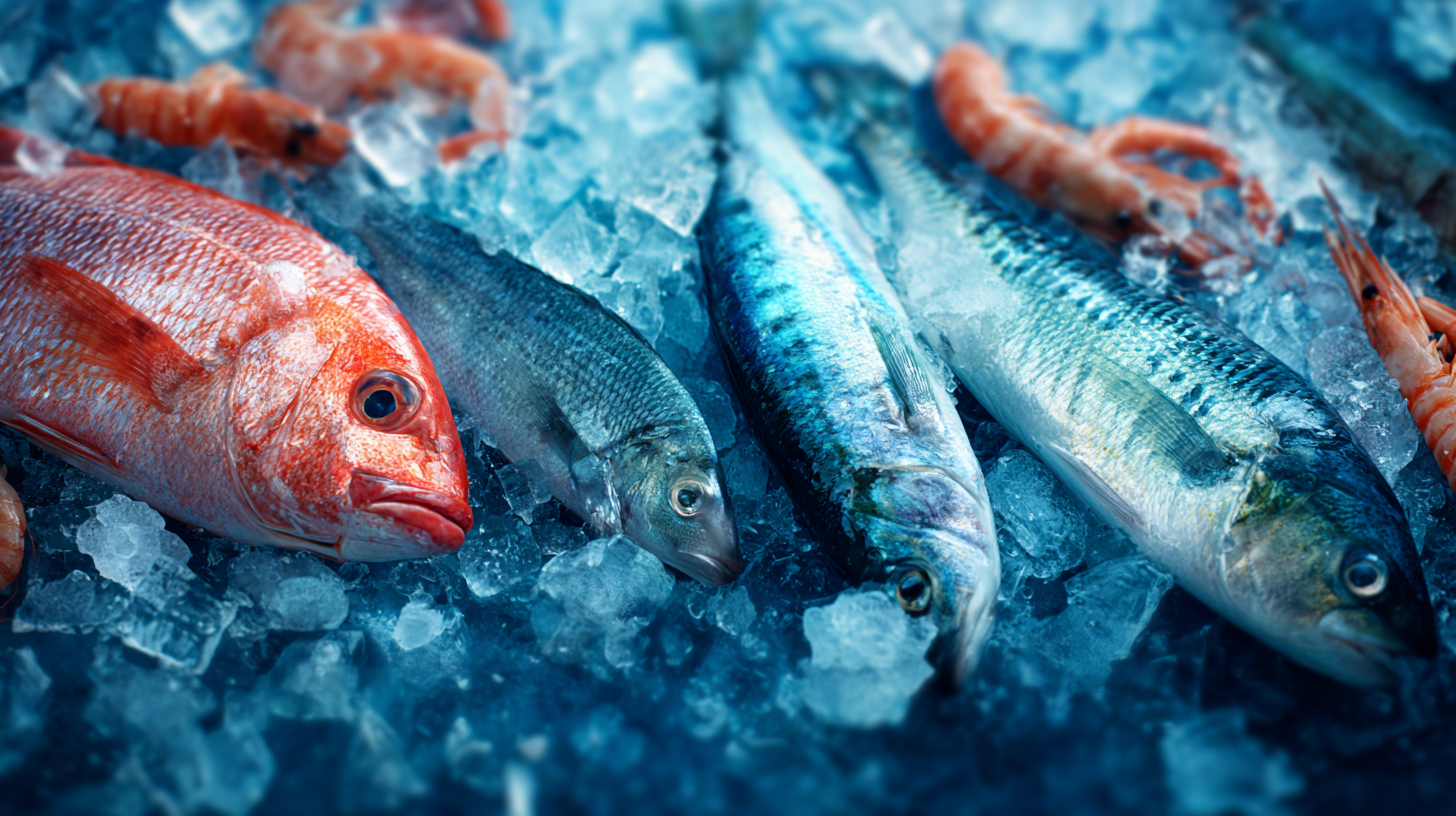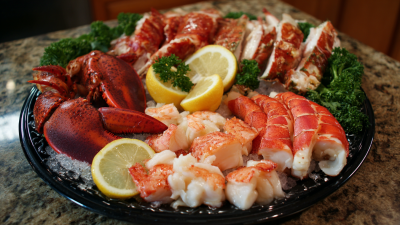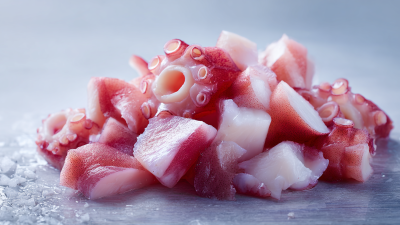The global seafood market has witnessed a significant growth trend, with the demand for frozen seafood mix rising impressively in recent years. According to a report by MarketsandMarkets, the frozen seafood segment is expected to reach a valuation of over $45 billion by 2025, driven by increasing consumer preferences for convenience and nutritional value.

Frozen Seafood Mix, which typically includes a variety of fish, shrimp, and mollusks, offers a multitude of health benefits, such as high protein content and essential omega-3 fatty acids. Furthermore, the ability to preserve the freshness and quality of seafood through freezing not only caters to the growing health-conscious demographic but also supports sustainable fishing practices.
As we explore the ocean's richness, understanding the myriad advantages of incorporating Frozen Seafood Mix into our diets can inspire both culinary creativity and a deeper appreciation of marine biodiversity.
Frozen seafood mixes offer a convenient and nutritious option for individuals seeking to enhance their diets. These blends typically include a variety of seafood, such as shrimp, scallops, and different fish species, which are all rich in essential nutrients. One of the standout benefits of these mixes is their high protein content. Seafood is an excellent source of lean protein, which is vital for muscle development, tissue repair, and overall health. Additionally, seafood is packed with omega-3 fatty acids, which have been shown to support heart health, reduce inflammation, and promote brain function.
Moreover, frozen seafood mixes retain much of their nutritional value, making them a great choice for busy lifestyles. Unlike fresh seafood, which can spoil quickly, frozen options offer extended shelf life without sacrificing quality. They are also versatile and can be used in a variety of dishes, from stir-fries to pastas. This adaptability allows individuals to incorporate more seafood into their meals, thereby benefiting from the rich vitamins and minerals found in these marine sources, such as iodine, selenium, and various B vitamins. This makes frozen seafood mixes not only a delicious addition to any diet but also a smart choice for overall health.
When choosing the right frozen seafood mix for your needs, it’s essential to consider both quality and convenience. Recent investigations into seafood delivery services have indicated that fresh and frozen options can vary significantly in terms of taste and safety. For instance, ensuring that shrimp retains its freshness is critical; signs such as unusual odors can indicate the need to avoid certain products altogether. The seafood supply chain demands a keen eye on freshness, with studies suggesting that seafood can lose much of its flavor and nutritional value if not properly stored and handled.
Organizations in the industry emphasize that frozen seafood can be a great alternative, especially when considering the benefits of convenience and longer shelf life. For households that frequently cook seafood, purchasing frozen mixes offers a way to maintain a varied diet while ensuring that quality is not sacrificed. Product reviews have highlighted several frozen seafood items that stand out, providing insights into which options are worth trying. According to various assessments, consumers are likely to find high-quality seafood that meets their expectations if they pay attention to packaging and sourcing information.

Frozen seafood mix offers a delightful variety of flavors and textures that can elevate any meal. One creative way to prepare it is by making a seafood paella. Start by sautéing onions, garlic, and bell peppers in a large skillet, then add your frozen seafood mix along with rice, saffron, and chicken or vegetable broth. Allow it to simmer until the rice is cooked and the seafood is tender, bringing a taste of the coast right to your kitchen.
Another enticing option is to create a seafood stir-fry. Begin by defrosting the seafood mix and setting it aside. In a hot pan, stir-fry a mix of colorful vegetables such as broccoli, snap peas, and bell peppers. Once the vegetables are tender-crisp, add the seafood mix, along with a splash of soy sauce and a hint of ginger for a burst of flavor. Serve it over rice or noodles for a quick, nutritious meal packed with oceanic goodness.
When it comes to frozen seafood, sustainability should be at the forefront of sourcing decisions. Responsible practices in the seafood industry are crucial for maintaining healthy ocean ecosystems and supporting local fishing communities. By choosing frozen seafood that is certified by reputable organizations, consumers can make informed choices that align with environmental stewardship. Certifications such as the Marine Stewardship Council (MSC) and the Aquaculture Stewardship Council (ASC) indicate that the seafood has been harvested or farmed in a way that minimizes environmental impacts.

Moreover, the benefits of responsible sourcing extend beyond just ecological factors. Sustainable frozen seafood often means better quality products, as many sustainable practices encourage higher standards for seafood handling and processing. This not only ensures that consumers receive fresh, nutritious options, but also supports the long-term viability of fish stocks and habitats. By prioritizing sustainable frozen seafood, both consumers and businesses can contribute to a more balanced and productive ocean environment.
When it comes to maximizing flavor in frozen seafood dishes, the right seasoning and pairing can make all the difference. A key tip is to allow the seafood to thaw properly, which helps preserve its natural flavors and texture. Once ready, consider using bold spices and marinades to enhance the seafood's taste. For instance, a blend of citrus zest, garlic, and fresh herbs can elevate shrimp or scallops, while a smoky paprika rub can add depth to fish fillets. The use of high-quality condiments can also transform a simple seafood meal into a gourmet experience.
Pairing frozen seafood with complementary sides is another essential aspect of flavor maximization. Think about the balance of tastes and textures; for example, a crunchy slaw can provide a refreshing contrast to rich, buttery lobster, while a hearty risotto can enhance the delectable charm of a mixed seafood platter. As culinary experts suggest, experimenting with various hot sauces can fire up the flavor profile, catering to different spice tolerances and preferences. With a mindful approach to seasoning and pairing, your frozen seafood dishes can shine with vibrant flavors that bring people together around the table.
| Seafood Type | Nutritional Benefits | Seasoning Pairings | Cooking Methods |
|---|---|---|---|
| Shrimp | High in protein, low in calories, rich in iodine and selenium | Garlic, lemon, chili flakes | Grill, sauté, boil |
| Mussels | Excellent source of vitamins B12 and C, good source of zinc | White wine, parsley, garlic | Steam, bake, boil |
| Salmon | Rich in omega-3 fatty acids, high in protein, contains potassium | Dill, lemon, capers | Bake, grill, poach |
| Cod | Low in fat, high in protein, rich in phosphorus | Lemon, thyme, paprika | Bake, pan-fry, steam |
| Squid | Rich in protein, low in calories, good source of vitamin B12 | Lemon, black pepper, tomatoes | Grill, fry, sauté |






